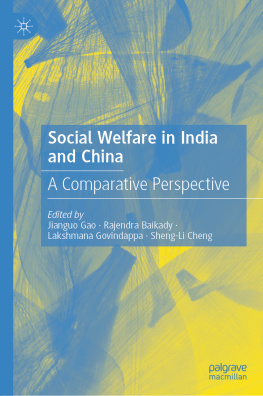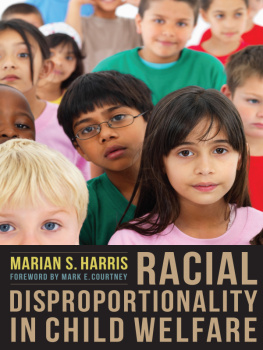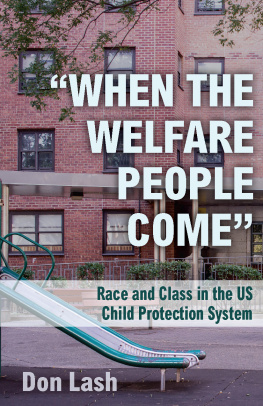The authors have taken a vast range of relevant material and delivered an enlightening and provocative resource for students and others dealing with the complexities of child welfare today.
Daniel Pollack, Professor, Wurzweiler School of Social Work, Yeshiva University
Child Welfare: Preparing Social Workers for Practice in the Field is a comprehensive and practical blending of theory, practice, and policy in this critical arena of social work. The authors use multiple case examples and describe pertinent court decisions to explain the evolution and challenges of child welfare services. The examples bring cases to life and worksheets and drawings illustrate the kinds of tasks with which social workers must deal. I was particularly impressed with the discussion about mandated reporting, assessment using the person-in-environment model, and the difficulties of youth aging out of foster care. I believe that the book represents a solid addition to the knowledge base of social work and that students will find it compelling reading.
Grafton H. Hull Jr., Professor Emeritus at the University of Utah College of Social Work
Child Welfare
Child Welfare: Preparing Social Workers for Practice in the Field is a comprehensive text for child welfare courses taught from a social work perspective. This textbook provides a single source for all material necessary for a contextual child welfare course.
As well as combining history, theory, and practice, the authors integrate different practice perspectives to teach social workers how to engage children and families at the micro, mezzo, and macro levels. Covering both broad issues, such as child welfare, child maltreatment, and responses to child maltreatment, and current issues in social care, including mandated reporting and evidence-based policy prevention and preservation, the material is designed to meet the needs of social work students entering the child welfare workforce.
Child Welfare provides students in social work courses at both the undergraduate and graduate levels with a single source for all material necessary to successfully navigate their studies and careers.
Kathryn Krase, Associate Professor of Social Work in the Wurzweiler School of Social Work at Yeshiva University, is an expert in the Mandated Reporting of Suspected Child Maltreatment, with many significant publications and presentations on the topic. As a lawyer, Dr. Krase represented children in Family Court for the New York Society for the Prevention of Cruelty to Children.
Tobi DeLong Hamilton, Assistant Professor and MSW Program Director in the Department of Social Work at Brandman University, has worked in the social work field for 20 years and has experience in child welfare, adoptions, medical and psychiatric social work. She worked in private practice as a psychotherapist specializing in family and childhood problems prior to moving into higher education full time. While in private practice, she maintained a connection to public child welfare by evaluating, writing reports, and testifying as an expert witness for children in foster care.
First published 2021
by Routledge
52 Vanderbilt Avenue, New York, NY 10017
and by Routledge
2 Park Square, Milton Park, Abingdon, Oxon OX14 4RN
Routledge is an imprint of the Taylor & Francis Group, an informa business
2021 Taylor & Francis
The right of Kathryn Krase and Tobi DeLong Hamilton to be identified as authors of this work has been asserted by them in accordance with sections 77 and 78 of the Copyright, Designs and Patents Act 1988.
All rights reserved. No part of this book may be reprinted or reproduced or utilized in any form or by any electronic, mechanical, or other means, now known or hereafter invented, including photocopying and recording, or in any information storage or retrieval system, without permission in writing from the publishers.
Trademark notice: Product or corporate names may be trademarks or registered trademarks, and are used only for identification and explanation without intent to infringe.
Library of Congress Cataloging-in-Publication Data
Names: Krase, Kathryn, author. | DeLong Hamilton, Tobi, author.
Title: Child welfare : preparing social workers for practice in the field / Kathryn Krase, Tobi DeLong Hamilton.
Description: 1 Edition. | New York City : Routledge Books, 2020. | Includes bibliographical references and index.
Identifiers: LCCN 2020029012 | ISBN 9781138218826 (hardback) | ISBN 9781138218833 (paperback) | ISBN 9781315437019 (ebook)
Subjects: LCSH: Child welfare. | Social work with children.
Classification: LCC HV713 .K73 2020 | DDC 362.7--dc23
LC record available at https://lccn.loc.gov/2020029012
ISBN: 978-1-138-21882-6 (hbk)
ISBN: 978-1-138-21883-3 (pbk)
ISBN: 978-1-315-43701-9 (ebk)
Typeset in Bembo
by Taylor & Francis Books
Contents
PART I
A Social Work Introduction to Child Welfare
1What Is Child Welfare?
2History of Child Welfare
3Child Welfare Policy: 1960 to Present
4Using Theory to Understand Child Maltreatment
PART II
Defining Child Maltreatment
5Neglect
6Physical Abuse
7Psychological Abuse
8Sexual Abuse
PART III
Response to Child Maltreatment
9The Child Protection Process
10Professional Considerations
11Mandated Reporting
12Prevention and Preservation
13Substitute Care
14Adoption
15Aging Out
16Ecological Perspective of Child Welfare
- 1What Is Child Welfare?
- 2History of Child Welfare
- 3Child Welfare Policy: 1960 to Present
- 4Using Theory to Understand Child Maltreatment
- PART IIDefining Child Maltreatment
- 5Neglect
- 6Physical Abuse
- 7Psychological Abuse
- 8Sexual Abuse
- PART IIIResponse to Child Maltreatment
- 9The Child Protection Process
- 10Professional Considerations
- 11Mandated Reporting
- 12Prevention and Preservation
- 13Substitute Care
- 14Adoption
- 15Aging Out
- 16Ecological Perspective of Child Welfare
Chapter Summary
In order to understand the policies and systems designed to protect children from harm, we need to understand the basic concepts that frame Child Welfare. Who is a child? What do children need? What is welfare? Who is responsible for preserving child welfare? These may seem like straightforward questions, with simple answers, but this chapter will, hopefully, make clear that there are no simple answers, because these questions are more complex than first imagined.







